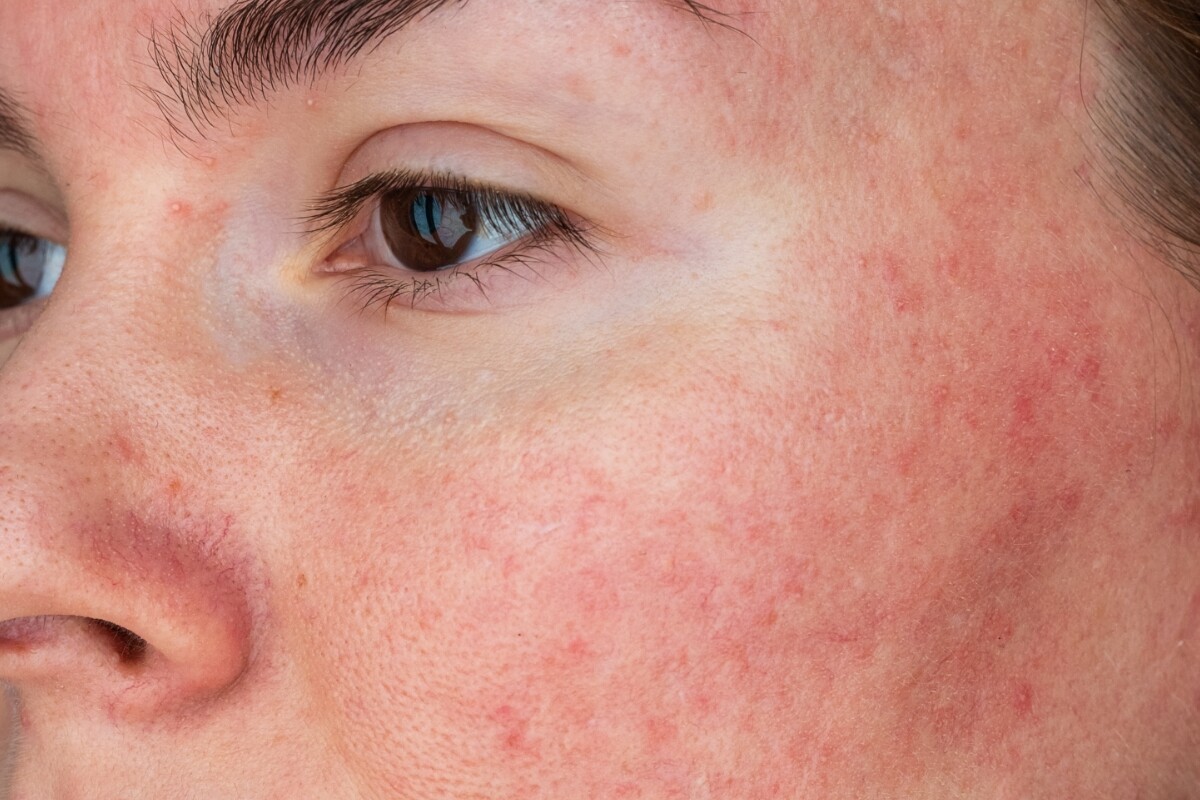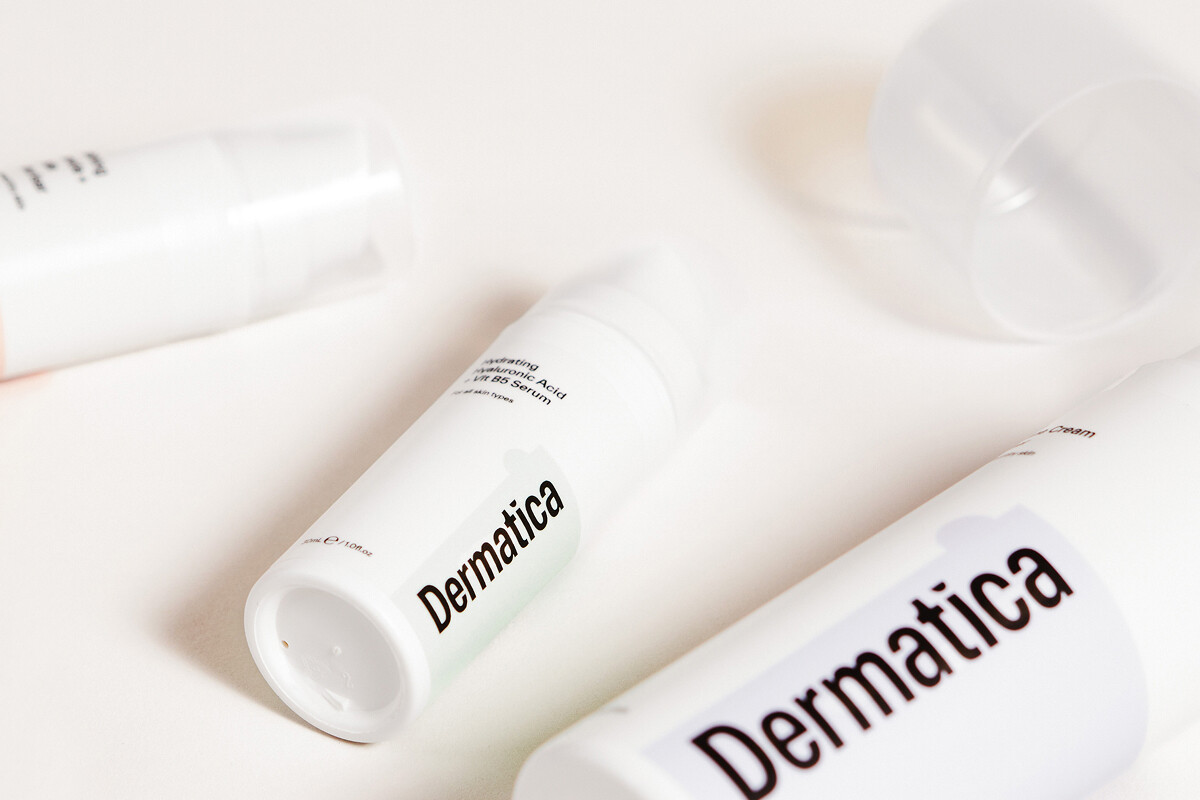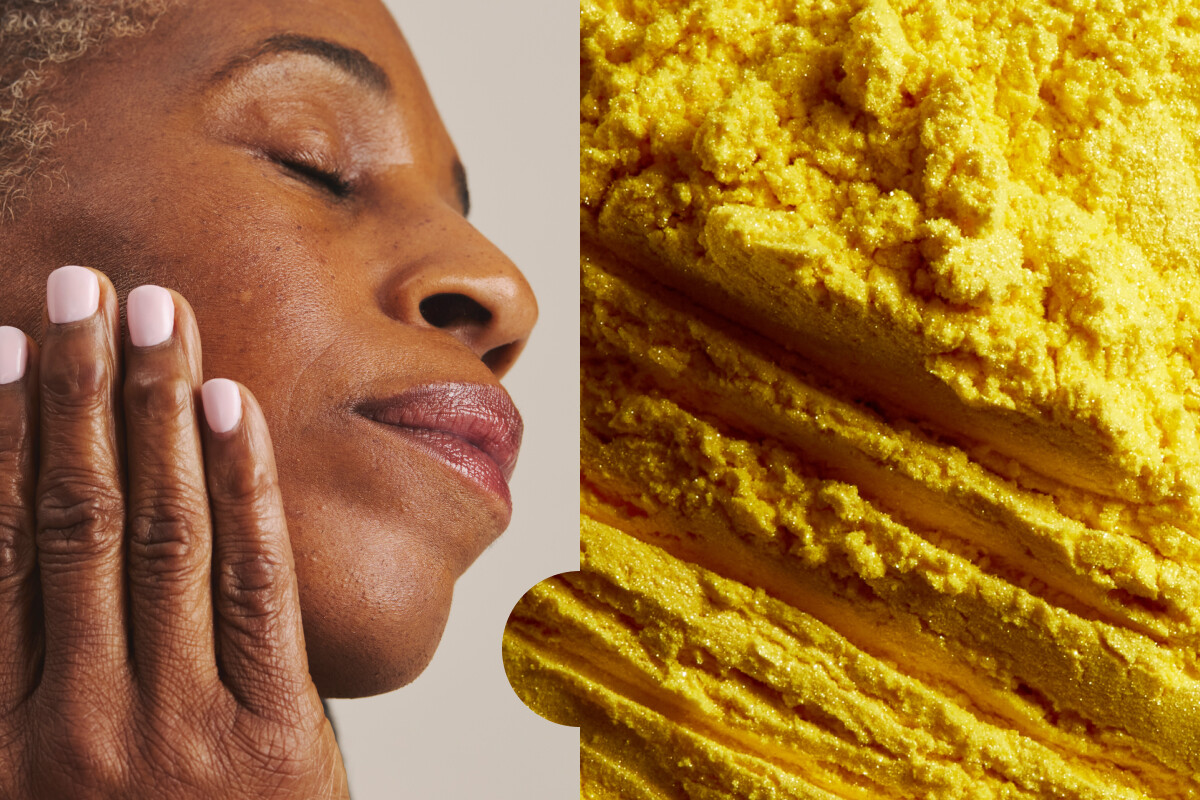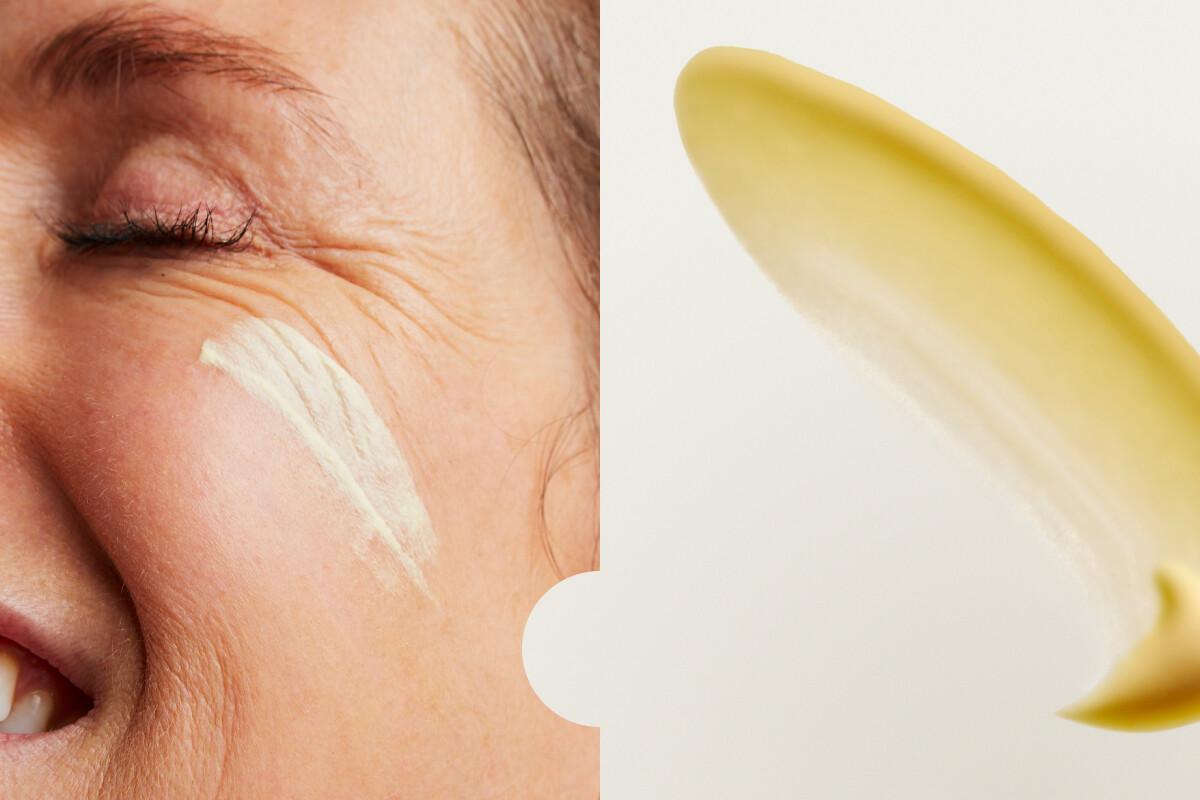Can you use glycolic acid and retinol together?
Glycolic acid and retinol are among skincare’s most popular ingredients to treat concerns like hyperpigmentation, early skin ageing and acne. [1,3] But should you use them at the same time?
Here, our dermatology experts explain how and when to combine them to get the best results. And whether they recommend using both, based on your skin type.
Why You Might Combine Glycolic Acid & Retinoids
Skin ageing is a natural and normal part of life. However, UV exposure, pollution and the environment can speed this process up. These factors can damage the skin and cause collagen to break down, which can make us look older, faster. [2]
Both retinol and glycolic acid are backed by science to help slow down and prevent early skin ageing.
What is Retinol?
Retinol is an antioxidant derived from Vitamin A, and comes under the wider category of ingredients known as retinoids. Retinoids include over-the-counter forms like retinol and retinal, but can also include prescription types like tretinoin and adapalene. For this article, we’ll refer to retinoids generally to cover all our bases. [4]
What is Glycolic Acid?
Glycolic acid is mainly derived from plants such as sugar cane, but it can also be man-made in a lab. In lower concentrations, it’s available over the counter. Some dermatologists or aestheticians offer stronger glycolic acid treatments known as chemical peels. These are performed in their clinics, and should only be done by a qualified professional. [5]
When applied to the skin, both retinol and glycolic acid exfoliate the skin’s outer layer (the epidermis) in a controlled way. This encourages the removal of pigmented, dull-looking or dead skin cells on the surface. In deeper layers of skin (the dermis), they both boost collagen production and help prevent dark spots, too. [1,3]
Used either together or on their own, both help reduce the look of visible fine lines, hyperpigmentation from acne and melasma, sun damage, uneven skin texture, inflammation, dry or dehydrated skin, and acne. [1,4]
This combination is also effective for treating acne scarring. One trial combining retinoic acid and glycolic acid saw significant improvement in acne scars in 91.4% of patients, and reduced the appearance of post-inflammatory hyperpigmentation caused by acne, too. [6]
Are They Safe To Use Together?
Yes, you can use glycolic acid and retinoids together, but you must be careful because both ingredients have the potential to irritate skin. This combination may not suit everyone, particularly those with sensitive skin.
Dermatologist tip: “Both ingredients have similar effects on the skin and treat similar conditions, so if your skin concern is still improving from one ingredient – you might not need to add the other active yet.” – Dr. Shendy Engelina, Consultant Dermatologist.
Ask a Professional First
Before adding both to your regular routine, consult a skincare professional. Overusing or combining them too frequently can be too irritating and damage your skin barrier. [6]
If you’re a Dermatica subscriber, don’t forget that you have access to our team through your dashboard. Reach out to your dermatology experts, who can assess whether this combination is suitable for your specific skin type and concerns. You can send them messages anytime, as often as needed, as part of your subscription.
Not a Subscriber?
If you don’t have access to professional advice, here are some tips from our experts to help you determine if using glycolic acid and retinoids is right for you, and how to combine them safely without damaging your skin barrier.
Expert Tips On Using Glycolic Acid and Retinoids Together
Combining glycolic acid and retinoids can be highly effective, but it’s essential to approach this combination carefully. Only introduce both ingredients into your routine once your skin tolerates each well. Start by adding one active ingredient at a time, ideally begin with retinoids.
1. Introduce Retinoids First
When starting retinoids like retinol, retinal, or tretinoin for the first time (or after a long break), your skin may experience initial side effects, especially in the first few weeks of use. Depending on how your skin reacts, normal symptoms may include:
– Redness, dryness, and peeling
– Mild stinging or irritation
– Purging (temporary breakouts): This process can last 4–8 weeks as your skin adjusts to the retinoid.
If you experience these side effects, do not add glycolic acid or any other strong active ingredients until the reaction subsides. Using too many exfoliants at the same time can overwhelm your skin barrier, leading to irritation and inflammation.
For Dermatica subscribers, your personalised treatment leaflet (included with your first formula) provides guidance on which products to use or avoid while your skin is adjusting.
2. Use Retinoid In The Evening
It’s best to apply your retinoids at night before bed on clean, dry skin, after cleansing. To prevent your skin from getting irritated, you can use a ceramide-rich, fragrance-free moisturiser before and/or after applying retinoids. Applying moisturiser both before and after retinoids, known as the “sandwich method”, won’t reduce the product’s effectiveness. And, it can help prevent dryness or flakiness.
Add Glycolic Acid to Boost Results
You might decide that glycolic acid is a great option for you – as an addition to retinoids, or as a substitute. For example,
Your Skin is Intolerant to Retinoids
If your skin is intolerant to higher doses, or you can’t use your treatment consistently due to side effects, it can become uncomfortable.
Glycolic acid could be more suitable for you, since it provides extra exfoliation without the “retinol purging” or over-drying of your skin.
You Want to See More Results
If your progress has plateaued and your skin is generally healthy and comfortable, you might be ready to add glycolic acid to your routine.
Glycolic acid may help improve skin texture, address uneven skin tone, and boost the effectiveness of your retinoid. Just make sure you use glycolic acid at a different time of day to your retinoid to avoid overwhelming your skin with actives.
Taking a break from retinoids
Although you can safely use retinoids long term, you may have to pause your treatment for a time.
If you can’t access your retinoid treatment or prescription, glycolic acid is a solid alternative that’s available over the counter. It can maintain cell turnover and deliver similar anti-ageing benefits until you can restart your retinoid again.
How to Combine a Retinoid with Glycolic Acid
By using retinoids and glycolic acid carefully, you can unlock powerful anti-ageing benefits without overwhelming your skin.
Here are Dr. Engelina’s top tips for adding glycolic acid to your routine:
Make Sure Your Skin Tolerates it
Wait until your skin has fully adjusted to your retinoid treatment, first. There should be no signs of irritation, dryness, or sensitivity. This adjustment – known as “the retinoid purge” – can take several weeks or even months. Always use your skin’s response as your guide.
Patch Test
Always patch test glycolic acid. Apply the product to a small area of skin before applying it to your entire face.
Start Slowly
Begin using glycolic acid 2-3 times per week, applying it at a different time of day than your retinoid.
For example, use glycolic acid in the morning and retinoid at night. Using too many strong or exfoliating skincare ingredients at the same time of day may cause irritation, inflammation or skin barrier damage
Notice Irritation?
Stop using both glycolic acid and your retinoid. Switch to soothing emollient products with simple, fragrance-free, dermatologist-backed ingredients to help your skin recover.
Use a cleanser like our Balancing Glycerin Gel Cleanser, as it’s formulated according to the NICE guidelines for sensitive and very sensitive skin types.
Skip your treatment step for now.
Then add a barrier-strengthening moisturiser like Nourishing Ceramide + Peptide Moisturiser.
For areas that are dry, flaky or sore, use Restoring Ceramide Skin Balm or a fragrance-free petrolatum product to help keep the skin barrier hydrated and protected.
Once your skin has settled, reintroduce each ingredient gradually, and one at a time.
By following these steps, you can safely enjoy the combined benefits of glycolic acid and retinoids while protecting your skin barrier and achieving optimal results.
Remember, more isn’t always better with active ingredients. Healthy skin is a marathon, not a sprint. Overloading your routine can damage your skin barrier and undo your hard-earned progress.
Why Daily Sunscreen Is Always A Must
Both retinoids and glycolic acid make your skin more sensitive to sunlight, so it’s important for everyone to wear broad-spectrum sunscreen with at least SPF 30+ every day, even during the winter.
This helps prevent sun damage, which can cause skin reactions, ageing, hyperpigmentation, inflammation, and worsening of acne – and helps protect you from skin cancer. [6,7] Some retinoids, like tretinoin, can also deactivate when exposed to natural sunlight, making them less effective. [8]
When To Avoid Glycolic Acid
Most people can use glycolic acid without issues, but due to its exfoliating properties, it should be avoided on inflamed skin, open cuts, or wounds. Ensure your skin barrier is healthy and fully healed before (re)introducing glycolic acid into your routine. [10]
Rosacea & Glycolic Acid
While some people with rosacea may tolerate glycolic acid, we recommend caution. Especially if you’re already using a personalised formula with a combination of active ingredients such as ivermectin, metronidazole, or azelaic acid. [11,12]
If your routine has been prescribed by a dermatologist or a service like Dermatica, we generally advise that you do not need and should not add glycolic acid to your skincare routine.
When To Avoid Retinoids
If your skin barrier is damaged, take a break from your retinoid product until your skin has fully healed and feels back to normal. This may take at least a few days, but don’t worry—a short break from retinoids won’t affect your overall progress.
Rosacea & Retinoids
According to the American Academy of Dermatology, people with rosacea flare-ups or breakouts should only use retinoids under professional supervision, as retinoids can worsen the condition. [13]
If your rosacea is well-managed and your flare-ups are under control, some dermatology experts may consider prescribing retinoids. However, this will depend on what your skin can tolerate. Consult with our team or a dermatologist first, as other ingredients like azelaic acid or ivermectin may be more suitable and yield better results. [14]
How about pregnancy and breastfeeding?
Glycolic acid is generally considered safe for use during pregnancy and breastfeeding in lower concentrations (up to 10%).
No retinoid products are recommended during this time. If you’re pregnant or breastfeeding and using prescription retinoids, speak to your dermatology expert as soon as possible so they can adjust your treatment. [15]
Clinical Aftercare
When you use a personalised formula from Dermatica, unlimited check-ins are included in your treatment plan. This means you can ask our team questions, check skincare products or flag any side effects and concerns with us. We’ll then help you adjust either your skincare routine, or your personalised treatment plan, to make sure we get you the best results.
For more information on retinoids, acids or any Dermatica-approved active ingredients, visit our website.
Products mentioned:
Balancing Glycerin Gel Cleanser
Nourishing Ceramide + Peptide Moisturiser.
Restoring Ceramide Skin Balm
SPF50 Photodamage Defence Sunscreen
References
1. Narda M, Trullas C, Brown A, Piquero‐Casals J, Granger C, Fabbrocini G. Glycolic acid adjusted to pH 4 stimulates collagen production and epidermal renewal without affecting levels of proinflammatory TNF‐alpha in human skin explants. Journal of Cosmetic Dermatology. 2020 Jul 24;20(2):513–21.
2. Zhang S, Duan E. Fighting against Skin Aging. Cell Transplantation. 2018 Apr 25;27(5):729–38.
3. Mukherjee S, Date A, Patravale V, Korting HC, Roeder A, Weindl G. Retinoids in the treatment of skin aging: an overview of clinical efficacy and safety. Clinical Interventions in Aging. 2006 Dec;1(4):327–48.
4. Zasada M, Budzisz E. Retinoids: active molecules influencing skin structure formation in cosmetic and dermatological treatments. Advances in Dermatology and Allergology [Internet]. 2019 Aug;36(4):392–7. Available from: https://www.ncbi.nlm.nih.gov/pmc/articles/PMC6791161/
6. Kornhauser A, Wei RR, Yamaguchi Y, Coelho SG, Kaidbey K, Barton C, et al. The effects of topically applied glycolic acid and salicylic acid on ultraviolet radiation-induced erythema, DNA damage and sunburn cell formation in human skin. Journal of Dermatological Science. 2009 Jul;55(1):10–7.
5. Chandrashekar B, Ashwini K, Vasanth V, Navale S. Retinoic acid and glycolic acid combination in the treatment of acne scars. Indian Dermatology Online Journal. 2015;6(2):84.
7. Retinoid or retinol? [Internet]. www.aad.org. 2021. Available from: https://www.aad.org/public/everyday-care/skin-care-secrets/anti-aging/retinoid-retinol
8. Rosso JD, Harper J, Pillai R, Moore R. Tretinoin Photostability: Comparison of Micronized Tretinoin Gel 0.05% and Tretinoin Gel 0.025% Following Exposure to Fluorescent and Solar Light. The Journal of Clinical and Aesthetic Dermatology [Internet]. 2013 Feb;6(2):25. Available from: https://pmc.ncbi.nlm.nih.gov/articles/PMC3579485/
9. Zhao J, Zhou B, Hou Y, Li L, Zhuo F. Effect of 5% glycolic acid complex and 20% glycolic acid on mild-to-moderate facial acne vulgaris. Chinese Medical Journal. 2022 Nov 5;135(21):2614–6.
10. Tang SC, Yang JH. Dual Effects of Alpha-Hydroxy Acids on the Skin. Molecules : A Journal of Synthetic Chemistry and Natural Product Chemistry [Internet]. 2018 Apr 10;23(4). Available from: https://www.ncbi.nlm.nih.gov/pmc/articles/PMC6017965/
11. Karwal K, Mukovozov I. Topical AHA in Dermatology: Formulations, Mechanisms of Action, Efficacy, and Future Perspectives. Cosmetics [Internet]. 2023 Oct 1;10(5):131. Available from: https://www.mdpi.com/2079-9284/10/5/131
12. King S, Campbell JR, Rowe R, Daly ML, Moncrieff G, Maybury C. A systematic review to evaluate the efficacy of azelaic acid in the management of acne, rosacea, melasma and skin aging. Journal of Cosmetic Dermatology. 2023 Aug 7;
13. Lara Rivero A, Whitfeld M. An update on the treatment of rosacea. Australian Prescriber [Internet]. 2018 Feb 1;41(1):20–4. Available from: https://www.ncbi.nlm.nih.gov/pmc/articles/PMC5828925/
14. Engin B, Özkoca D, Kutlubay Z, Serdaroğlu S. Conventional and Novel Treatment Modalities in Rosacea. Clinical, Cosmetic and Investigational Dermatology. 2020 Feb;Volume 13:179–86.
15. Kaplan YC, Ozsarfati J, Etwel F, Nickel C, Nulman I, Koren G. Pregnancy outcomes following first-trimester exposure to topical retinoids: a systematic review and meta-analysis. British Journal of Dermatology. 2015 Oct 19;173(5):1132–41.





